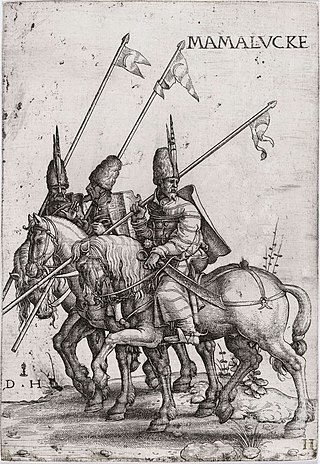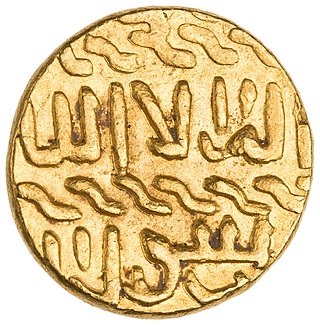
Mamluk or Mamaluk were non-Arab, ethnically diverse enslaved mercenaries, slave-soldiers, and freed slaves who were assigned high-ranking military and administrative duties, serving the ruling Arab and Ottoman dynasties in the Muslim world.
Richard Knolles was an English historian and translator, known for his historical account of the Ottoman Empire, the first major description in the English language.

The Battle of Chaldiran took place on 23 August 1514 and ended with a decisive victory for the Ottoman Empire over the Safavid Empire. As a result, the Ottomans annexed Eastern Anatolia and Upper Mesopotamia from Safavid Iran. It marked the first Ottoman expansion into Eastern Anatolia, and the halt of the Safavid expansion to the west. The Battle of Chaldiran was just the beginning of 41 years of destructive war, which only ended in 1555 with the Peace of Amasya. Though the Safavids eventually reconquered Mesopotamia and Eastern Anatolia under the reign of Abbas the Great, they would be permanently ceded to the Ottomans by the 1639 Treaty of Zuhab.

The Beylik of Dulkadir was one of the Anatolian beyliks established by the Turkoman clans Bayat, Afshar, and Begdili after the decline of Seljuk Sultanate of Rûm.

Al-Ashraf Sayf ad-Dīn Barsbāy was the ninth Burji Mamluk sultan of Egypt from AD 1422 to 1438. He was Circassian by birth and a former slave of the first Burji Sultan, Barquq.

The Mamluk Sultanate, also known as MamlukEgypt or the Mamluk Empire, was a state that ruled Egypt, the Levant and the Hejaz from the mid-13th to early 16th centuries. It was ruled by a military caste of mamluks headed by a sultan. The sultanate was established with the overthrow of the Ayyubid dynasty in Egypt in 1250 and was conquered by the Ottoman Empire in 1517. Mamluk history is generally divided into the Turkic or Bahri period (1250–1382) and the Circassian or Burji period (1382–1517), called after the predominant ethnicity or corps of the ruling Mamluks during these respective eras.

Al-Ashraf Zayn ad-Din Abu al-Ma'ali Sha'ban ibn Husayn ibn Muhammad ibn Qalawun (Arabic: الأشرف زين الدين شعبان, lit. 'The Most Noble, Grace of the Faith, Father of Excellence, Sha'ban son of Husayn, son of Muhammad, son of Qalawun', better known as al-Ashraf Sha'ban (السلطان شعبان or Sha'ban II, was a Turk Mamluk sultan of the Bahri dynasty in 1363–1377. He was a grandson of Sultan al-Nasir Muhammad. He had two sons who succeeded him: al-Mansur Ali and as-Salih Hajji.

Sir Paul Rycaut FRS was an English diplomat, historian, and authority on the Ottoman Empire.

The Ottoman–Mamluk War of 1485–1491 took place when the Ottoman Sultanate invaded the Mamluk Sultanate's territories of Anatolia and Syria. This war was an essential event in the Ottoman struggle for the domination of the Middle-East. After multiple encounters, the war ended in a stalemate and a peace treaty was signed in 1491, restoring the status quo ante bellum. It lasted until the Ottomans and the Mamluks again went to war in 1516–17; in that war the Ottomans defeated and conquered the Mamluks.
Al-ʿAwāṣim was the Arabic term used to refer to the Muslim side of the frontier zone between the Byzantine Empire and the Umayyad and Abbasid Caliphates in Cilicia, northern Syria and Upper Mesopotamia. It was established in the early 8th century, once the first wave of the Muslim conquests ebbed, and lasted until the mid-10th century, when the Byzantine advance overran it. It comprised the forward marches, comprising a chain of fortified strongholds, known as al-thughūr, and the rear or inner regions of the frontier zone, which was known as al-ʿawāṣim proper. On the Byzantine side, the Muslim marches were mirrored by the institution of the kleisourai and the akritai.

Reuven Amitai, also Reuven Amitai-Preiss, is an Israeli-American historian and writer, specializing in pre-modern Islamic civilization, especially Syria and Palestine during the time of the Mamluk Empire. In his 20s he moved to Israel, and became history professor at the Hebrew University of Jerusalem. As of 2012 he is the Dean of the Faculty of Humanities at the Hebrew University.
Loulon, in Arabic known as Lu'lu'a, was a fortress near the modern village of Hasangazi in Turkey.

Ala al-Dawla Bozkurt Beg was the ruler of Dulkadir in southern and central Anatolia from late 1480 until his death. Championed by the Ottoman Sultan Mehmed II, Bozkurt ousted his brother Shah Budak and claimed the throne.

The Silahdar Agha was a palace office of the Ottoman Empire, denoting the principal page of the Ottoman Sultan. As such its holders were persons of great influence, and provided many senior officials and even Grand Viziers.
Hund Şehzade was an Ottoman princess, granddaughter of claimant to the throne Süleyman Çelebi, and great-granddaughter of Sultan Bayezid I of the Ottoman Empire. She was wife of Barsbay, and later of Sayf ad-Din Jaqmaq, Egypt Sultans of the Burji dynasty.

Al-Malik al-Ẓāhir Sayf al-Dīn Abū Saʿīd Khushqadam ibn ʿAbdallāh al-Nāṣirī l-Muʾayyadī was a Mamluk sultan of Egypt and Syria from 28 June 1461 to 9 October 1467. He was born in Cairo, Egypt.

The prangi, paranki, piranki, pirangi, farangi, firingi, or firingiha was a type of cannon produced by the Ottoman Empire. It was subsequently copied and produced in other places such as the Mughal empire under Babur. The prangi was a breech-loading swivel gun.
The Battle of Cairo or Asandamur's rebellion was a clash that took place in late 1367 during the reign of the Mamluk sultan al-Ashraf Sha'ban and ended with the crushing of the rebellion against his rule.












